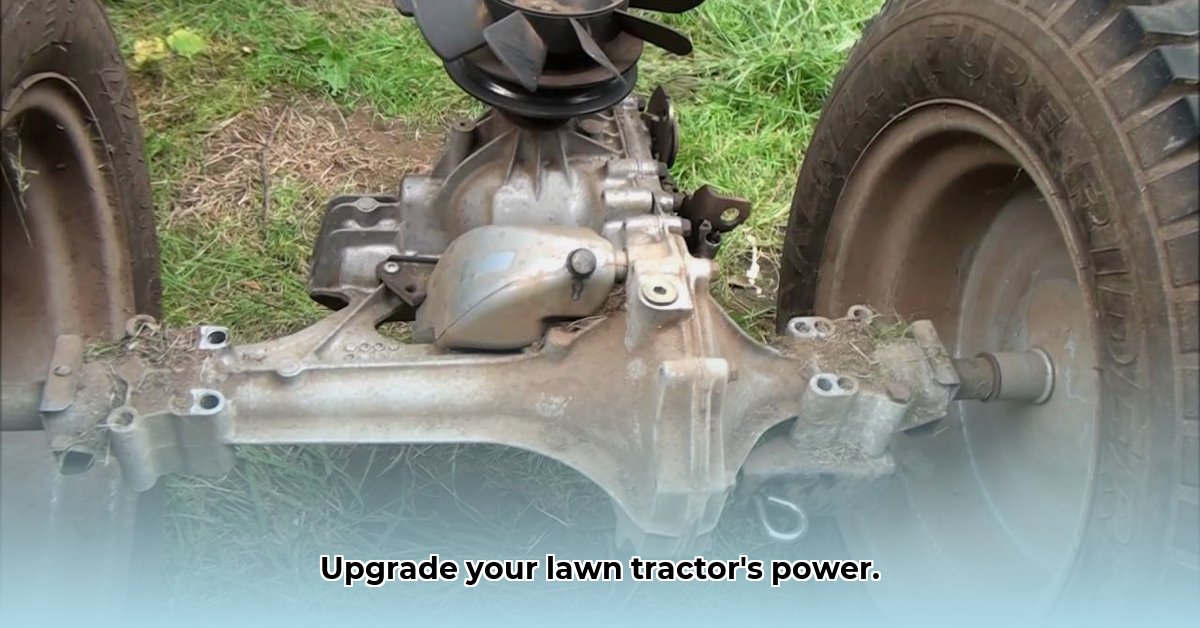
Choosing a lawn tractor can be daunting, especially when deciding between hydrostatic and manual transmissions. This guide clarifies the key differences, helping you select the perfect machine for your needs and budget. Whether you have a small patch of grass or a sprawling property, understanding these transmissions is crucial. We'll cover operation, maintenance, and cost comparisons so you can make an informed decision. For more in-depth resources, check out this helpful lawn tractor guide.
Hydrostatic Transmissions: Smooth and Easy
Hydrostatic transmissions offer smooth, stepless speed control. They use hydraulic fluid (like oil, but specialized) pumped through valves to drive a motor, turning the wheels. Increase fluid flow for faster speeds, decrease it to slow down – no gear shifting is needed. It's like adjusting the volume on a stereo. This ease of use makes them perfect for level terrain and less demanding tasks. Think of it like this: The engine provides power, the fluid transfers it, and valves control the flow.
However, the complexity of this system means more potential points of failure and specialized maintenance, potentially leading to higher repair costs compared to simpler manual transmissions. Would the convenience of a hydrostatic transmission be worth the potential for more complex and possibly costlier repairs?
Manual Transmissions: The Reliable Workhorse
Manual transmissions use gears to translate engine power into wheel motion, similar to a bicycle. You manually shift gears for optimal speed and power, providing greater control, especially on hills or in thick grass. This hands-on approach offers precision, particularly for challenging terrain or heavy-duty cutting. While requiring more operator skill, regular maintenance keeps them durable and efficient. But, decades of heavy use might lead to gear wear and eventual replacement.
Hydrostatic vs. Manual: A Detailed Comparison
This table directly compares key features, highlighting the tradeoffs between convenience and cost:
| Feature | Hydrostatic Transmission | Manual Transmission |
|---|---|---|
| Ease of Use | Very easy, seamless speed control | Requires gear shifting; learning curve involved |
| Power & Torque | Generally lower torque; best for flat terrain | Higher torque; ideal for hilly terrain and heavy use |
| Maintenance | More complex, potential for fluid leaks and higher costs | Simpler, lower maintenance costs |
| Initial Cost | Typically more expensive | Usually less expensive |
| Terrain Suitability | Best for level terrain | Better suited for hilly, uneven terrain |
| Fuel Efficiency | Can be less fuel-efficient under heavy load | Potentially better fuel efficiency |
Choosing the Right Transmission: A Decision Framework
Your choice depends on your specific needs and budget.
- Small, flat yard, infrequent use? A hydrostatic transmission prioritizes ease of use.
- Large, hilly yard, frequent heavy-duty use? A manual transmission's power and control are better suited for challenging conditions.
- Budget-conscious? Manual transmissions generally offer lower initial costs, though long-term costs can vary depending on usage. Remember to factor in the costs of potential repairs.
Maintenance and Troubleshooting: Keeping Your Tractor Running
Regular maintenance extends the life of any transmission.
Hydrostatic: Check fluid levels frequently (monthly) and change the hydraulic fluid according to the manufacturer's recommendations. Listen for unusual noises which might indicate problems.
Manual: Lubricate gears regularly. Pay attention to any grinding or difficulty shifting, suggesting possible wear.
The Bottom Line: Your Perfect Lawn Tractor Awaits
The "best" transmission depends on your individual needs and priorities. Carefully consider your budget, yard size, terrain, and how often you'll use the tractor. Making an informed decision will ensure you get the perfect machine for your mowing needs.